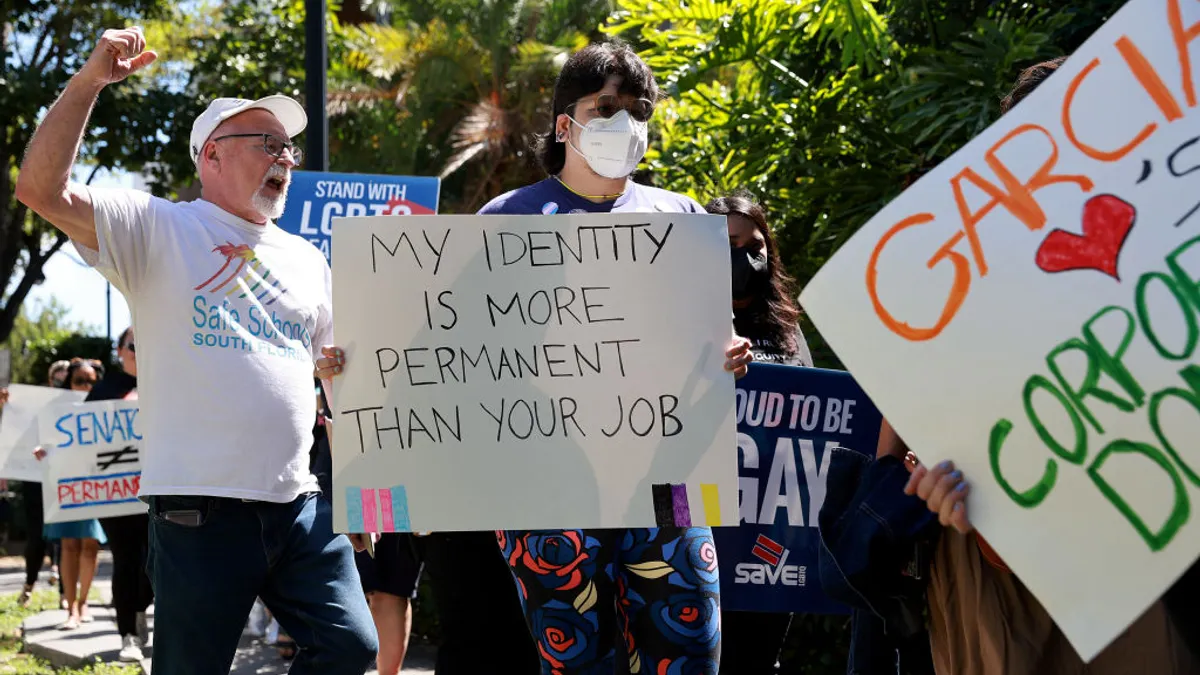With diversity and inclusion being top of mind for organizations across industries, one challenge for HR is to create a workforce that more closely resembles clients and the broader world. Organizations are looking to achieve a mix that reflects their commitment to inclusion and the varied perspectives a diverse workforce brings. But in an attempt to build an inclusive workforce, how do businesses avoid "reverse" discrimination?
For many characteristics, discrimination is discrimination, experts say. For example, white employees are protected from race discrimination and men are protected from gender discrimination. (Notably, this does not apply to disability discrimination; individuals without disabilities have no disability discrimination protections.) And the fear of running afoul of these laws isn't unfounded; men are alleging that unequal parental leave amounts to gender discrimination; a federal judge recently allowed an American to take a national origin claim to trial; and just days ago, a court advanced a white employee's claim that an IT firm favored Indian employees.
When it comes to hiring, a diverse candidate slate can ensure hiring managers get to choose from a pool of qualified candidates, while also potentially helping you reach your hiring goals.
Where to begin
Any attempt to diversify your workforce has to be an internal and external effort. When your business persona, for example, reflects a salacious culture that puts women on display, women may be loath to apply. This was the challenge for one tech company before leadership orchestrated a turnaround. Once an employer has cleaned up its public identity, it's time to look within.
"I believe there are four practical steps companies need to take to create an inclusive culture for women," reacHIRE CEO Addie Swartz said in an email to HR Dive. In addressing gender diversity, for example, she recommends businesses:
- actively increase the pipeline of women to middle and senior management roles;
- improve the culture and receptiveness of organizations toward women leaders;
- get creative with solutions for more flexible work hours and structures; and
- move more women into general management and profit and loss roles from which CEO and other top management appointments are made.
It's important to include men in the conversation, she adds, "because men currently hold the vast majority of the top-level roles it is essential to make male leaders more cognizant of this important responsibility and encourage them to widen their circle to include women."
Women and men look at job descriptions in fundamentally different ways, and research shows that even small things like word choice can put off female candidates, Swartz said. Messaging in job descriptions and postings can be an easy fix. If you're not confident you've eliminated all the terminology that could dissuade a woman from applying (and it's more than just the use of terms like "aggressive" or "killer instinct"), there are a multitude of platforms that can review messaging for bias and put you on the right track. The same goes for language that may dissuade older candidates from applying.
Process improvements
"The key to a diverse and fair workforce is intentionality and commitment," Swartz said. When working to increase female representation in the workplace, it's important to bring in the same amount of male and female candidates for every position, for example. A diverse workforce, she advised, begins with a diverse candidate pool.
A recent Greenhouse diversity and inclusion discussion recommended creating a recruitment process that is "comfortable and accessible" to all. But filling the deck with diverse candidates won't bring success if your interview team and hiring managers haven't consciously acted to reduce bias in their hiring initiatives.
Cheryl Roubian, head of people at Greenhouse, said in an email that organizations must focus on the attributes that make a stellar hire and hold recruiters accountable for assessments. "But you have to do both," she said. "Stacking your top of funnel with a diverse slate doesn't work if your interviewers aren't focused on the right things (or aren't focused). And focusing your interviewers doesn't work if all the candidates in your funnel look just like you."
Bonnie Mayfield, labor and employment defense attorney with Dykema Gossett PLLC, is also chair of the Diversity and Inclusion Committee and the Employment Law Committee of the International Association of Defense Counsel. She cites two frameworks through which employers can improve representation of women in the workforce: the Rooney Rule, and the Mansfield Rule.
The Rooney Rule, adopted by the National Football League, requires teams to interview at least one minority candidate for each vacant coaching position, and it was expanded subsequently to include general manager positions as well as female candidates. The Mansfield Rule, for the legal profession, examines whether firms are active in their consideration of diverse candidates for at least 30% of open leadership and governance roles. Both models can be used by businesses to develop inclusive recruitment practices that won't run afoul of the law.
Diversity requires inclusion
Leaders have to create an inclusive culture that goes beyond words, Mayfield said. She suggests leaders ask themselves whether they're driving tangible results in creating an inclusive workplace. Some questions she offers:
- Are you an effective mentor/champion of women or other diverse employees?
- Do you meaningfully participate in inclusion and diversity initiatives, or do you send your representatives?
- Do you create opportunities for women or diverse employees?
- Whom do you work with, lunch with or participate in business social activities alongside?
For many leaders, the answers to these questions may be surprising; leaders may not truly understand the nuances of implicit bias. "Through individual and personal action, leaders can help build inclusive organizations," Mayfield said.
The move to inclusivity begins with culture and values. "Often when people talk about building a diverse workforce," Roubian said, "they immediately think of recruiting and hiring. But it's important to realize that even if you're wildly successful in diversifying your workforce, if you haven't created an environment where staff, irrespective of their backgrounds, can feel a sense of belonging, they won't stay."



















